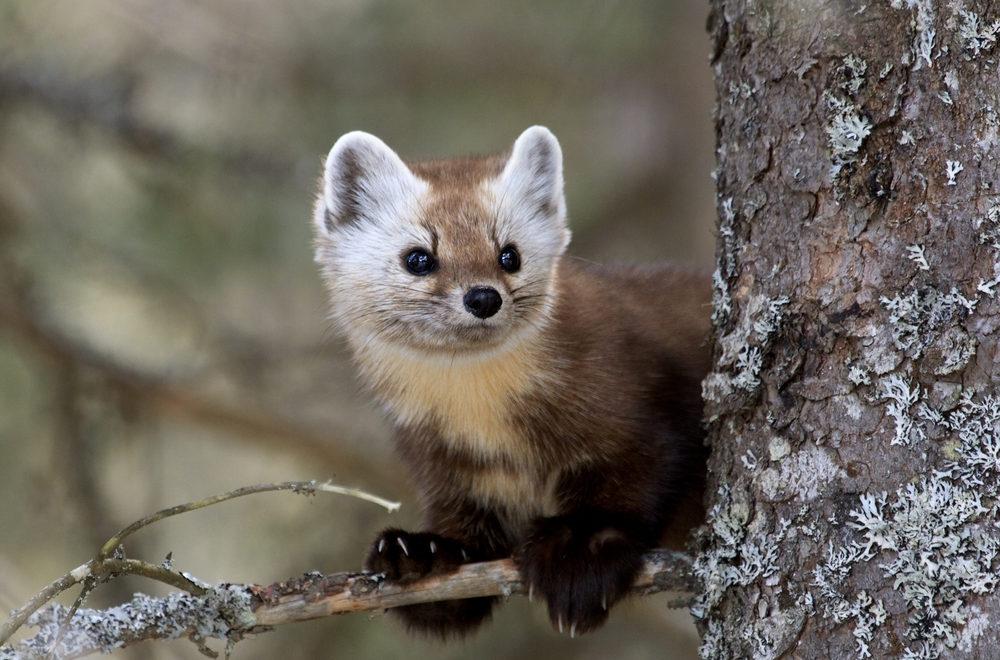
What’s up with Weasels?
Five fishers (Pekania pennanti – members of the mustelid, or weasel, family) that had been trapped in Alberta, Canada, were released last month (Nov. 5) into the dense, coastal forest near Lake Ozette in Olympic National Park. This effort was the latest event in a nearly two-decade long project conducted by federal, state, and tribal biologists to restore fishers to Washington State after becoming locally extinct due to over-trapping for their highly prized fur.
Ongoing monitoring efforts demonstrated that previous releases have successfully established a fisher population on the Olympic Peninsula. (The recent reintroduction was aimed at adding genetic diversity to the population’s gene pool.)
Surveys conducted throughout the Peninsula (including game cameras pointed at baited trees), have not only revealed how the fisher population has flourished, but also revealed the notable relative absence of another mustelid species, the Pacific marten.
The rarely seen, well camouflaged martens were relatively common at one time on the Olympic Peninsula according to trapping records. However, from 1968 to 2019 there have only been nine reliable detections of martens from surveys and photographs from hikers. Isolated from the population in the Cascades by the unsuitable habitat of the Puget Trough, a dead juvenile female found by a trail user in 2008 indicated martens were in-fact reproducing on the Peninsula.
Martens of the Cascades primarily occupy areas of high elevation with deep winter snowpack and maintain a stable population. The coastal population once occupied a much broader elevational range, including habitats near sea level. The few recent detections of martens on the Peninsula were all limited to high elevation areas, appearing to be absent from the low and middle elevation forests they once occupied. The remote and relatively inaccessible higher elevation forests on the Peninsula may have provided a refuge from fur trade trapping.
Previous survey efforts were limited in scope due to budget and personnel constraints. The lack of reliable information and verifiable records on the current distribution and status of coastal marten populations represents a consequential hindrance to making informed decisions about their conservation.
A new study will start in the spring of 2022 that will build upon the prior assessments to create a more complete data set on marten population distribution and status. This collaborative effort involving the National Park Service, US Forest Service, University of Washington, and Woodland Park Zoo will inform managers as to whether augmentation is necessary to secure the population and provide the scientific basis for the ongoing preservation of biodiversity here on the Olympic Peninsula.
Photo: Pacific Marten U.S. Fish and Wildlife Service

